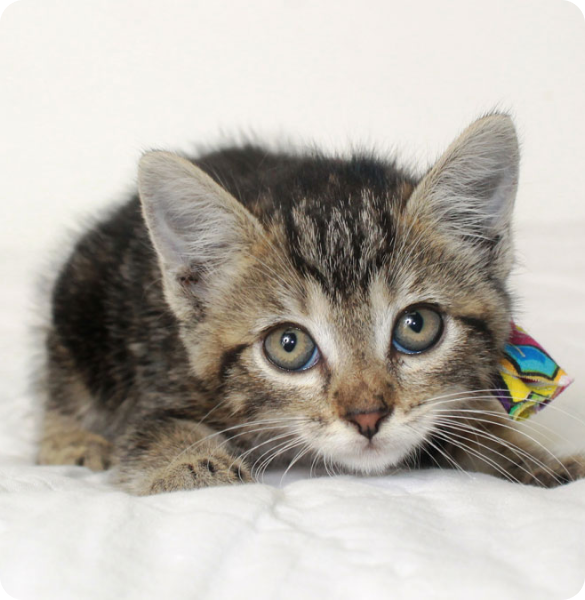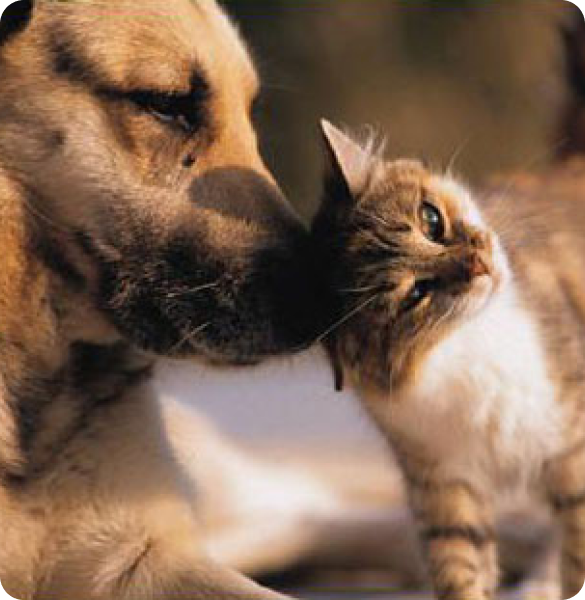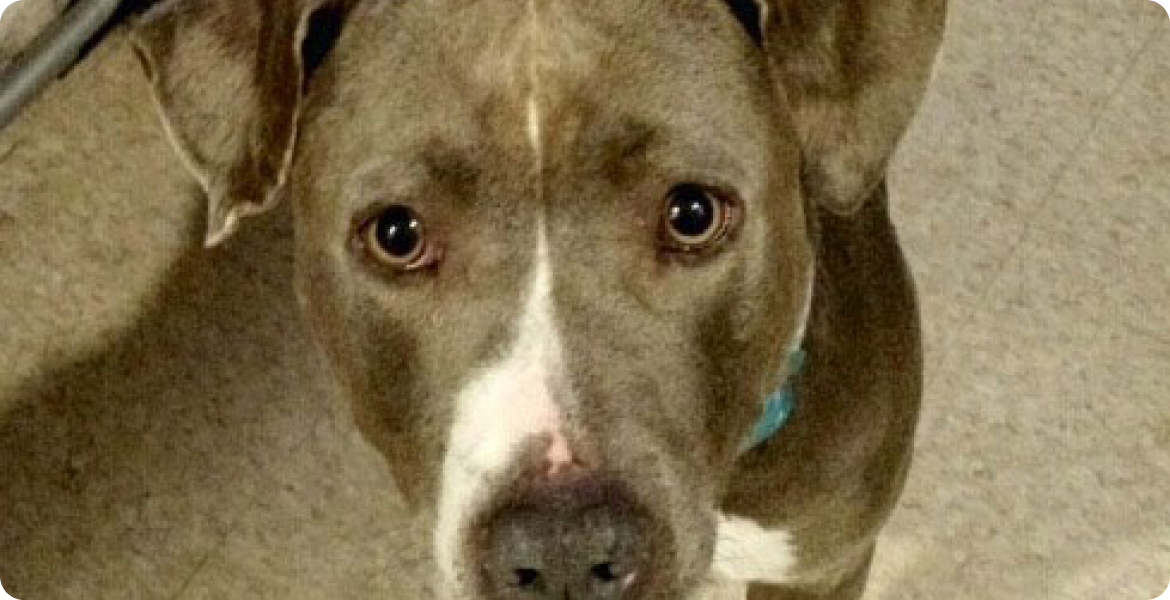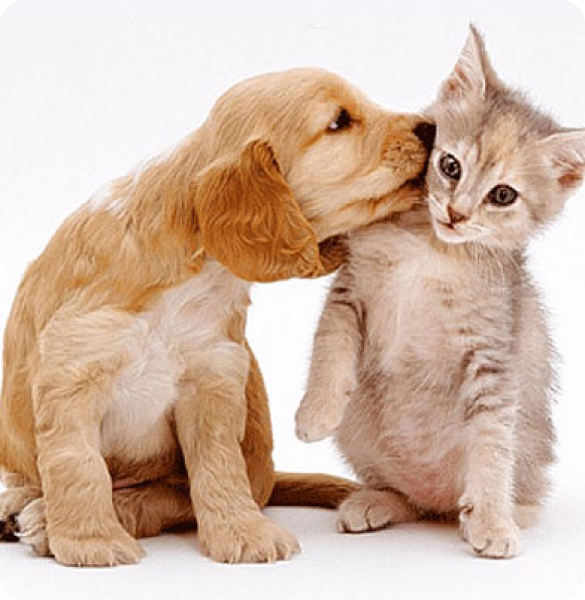Note for Guardians: Some of the most important scientific discoveries of the 20th Century have been in the field of vaccination to protect against the serious diseases that afflict man and animals.
Vaccination is only mandatory under certain circumstances (such as for the movement of animals across International borders). However, as an animal guardian you have an obligation to take whatever steps are practical and affordable to prevent disease. In addition, by protecting your animal you are also reducing the chances of it contracting one of these serious diseases and transmitting it to another animal.

A vaccine is a biological preparation containing antigenic material – that is biological material that will induce an immune response in an animal against a specific bacterial, parasitic or viral infection. The response induced by vaccines (except toxoids) is an active one involving the production of antibodies against the infectious agent, by the vaccinated animal. Once sufficient antibodies have been produced, and the animal’s immune system has been “primed” against the infectious agent, the vaccinated animal has a degree of protection against infection, and in some cases it may have cross-protection against other infections as well.
Depending upon the type of vaccine and the infectious agent involved, protection may be life-long following a vaccination – or it may reduce with time, requiring repeat vaccination at regular intervals.
There are two main types of vaccine:
These contain live organisms that have been modified in some way so that they do not cause disease (i.e. are not pathogenic). This is achieved by treating the infectious agent with heat or chemicals, by administering a naturally occurring non-pathogenic strain, or by growing a non-pathogenic (called a modified or attenuated) strain of the organism in a laboratory. Live vaccines replicate in the vaccinated animal’s body and they retain the surface antigens of the infectious agent – and so stimulate the production of specific antibodies by the animal. These antibodies can be produced locally near the site of administration, or at remote sites in the body (systemic), or both.
Vaccines that induce local immunity on mucosal surfaces – such as the lining of the respiratory tract – work very quickly in providing protection against infection.
As a general rule live vaccines provide a higher level of protection which lasts longer than that provided by killed vaccines. However, the protection is less than usually follows natural infection.
Passive protection in the animal (such as from maternal antibodies in milk) can inhibit the replication of the non-pathogenic living organism in the vaccinated animal, and so reduces the immune response. If this is the case repeat vaccination will be need to boost the protection.
One disadvantage of using live vaccines is the potential for a non-pathogenic strain to genetically mutate during it’s replication in the vaccinated animal, and for it to re-acquire pathogenicity.
Killed (or inactivated) vaccines contain antigenic material and the antigens present in the vaccine stimulate the production of antibodies by the body – but there is no replication of organisms within the vaccinated animal’s body. Some of these vaccines contain subunits of the infectious agent, which have been manufactured using genetic engineering techniques. Inactivated vaccines produce a lower immune response and require booster vaccinations (at least 2) to confer enough protection.
Some of these vaccines contain an adjuvant such as alum, aluminum hydroxide, aluminum phosphate, carbomer or a mineral oil to increase the immune response in the vaccinated animal. Unfortunately some adjuvants are irritating to the animal, cause local discomfort and sometimes a local reaction results. It is thought that the adjuvant used in some Feline Leukemia Virus vaccines may be responsible for the development of sarcomas at the injection site in cats.
Inactivated vaccines usually require annual boosters to maintain adequate protection in the animal.
One advantage of inactivated vaccines is that they are safer to use in pregnant animals than live vaccines.
Toxoid – this is a toxin derived from a micro-organism which has had it’s pathogenic effects removed by treating with heat or chemicals. It retains its ability to stimulate antibody production, but often such vaccines (e.g. antitetanus toxoid) require the use of an adjuvant.
Autogenous vaccine – this is when a vaccine is prepared from materials taken from the animal itself.
Emergency vaccine – are prepared from organisms isolated from individual animals (usually on a farm) when a commercial vaccine is not available
Some vaccines have undesirable side effects and care is needed when administering them. Local swelling at the vaccination site, and pain during administration are commonest following the use of vaccines containing adjuvants. Some vaccines cause a local change in coat color – which may be permanent in some cats. Rarely individuals may develop a hypersensitivity reaction following vaccination, which may need to be treated. Signs of this include vomiting, breathing difficulties, a skin rash (urticaria), excessive salivation and diarrhea. Full anaphylactic shock can result in some animals with collapse and severe respiratory distress – this must be treated as an emergency.
Live feline panleucopenia virus vaccine can cross the placenta and may cause abortion or developmental abnormalities in fetuses if it is administered to a pregnant cat.
Most recently, the occurrence of localized sarcomas at vaccine sites following the administration of feline leukemia virus vaccine to cats is causing great concern, and the precise mechanism involved is being investigated. It is thought that the formation of this cancer is possibly being stimulated by the adjuvant in the vaccine.
No vaccine is 100% effective under field conditions because there are many factors that can interfere with their efficacy.
Animals that are unwell, or that have an elevated body temperature should not be vaccinated, and many drugs (e.g. antibiotics, corticosteroids and immunomodulators) can reduce the immune response to a vaccine.
Vaccines may lose their potency if they are not stored, transported and administered correctly.
Information obtained from:

The past 20 years has seen an incredible growth in the uptake of pet insurance by guardians and breeders. This growth began initially in Europe , but it is also being seen in the USA and other parts of the world.
For a fairly modest premium you can have your pet animal(s) insured against the cost of veterinary treatment so that in the event of an accident, infection or development of a serious disease you don’t have to worry about the cost of the treatment. Like human health policies, these pet insurance policies sometimes also pay a lump sum on the death of the animal under specific conditions. A wide variety of policies are available to suit most situations depending on whether you own a single animal or a group of animals. Policies may appear to be the same, but you must read the small print because there are often large differences between them.

Take out an insurance policy that you can afford and which will cover the costs of veterinary treatment if your pet is suddenly taken ill and needs major treatment. These days major procedures (such as open heart surgery, cancer therapy or orthopedic surgery) can cost anything from $1000 – $6000. Make sure that the policy covers the on-going, long-term treatment of chronic conditions, and that your cover is guaranteed if you renew the policy every year. Some policies exclude pets over specified age – check how this will affect your pet as it gets older.
If your pet already has a chronic illness most Insurance companies will not cover it for that condition – so don’t be surprised. Also, it is illegal to state on your application form that your pet does not have a disease, when you know that it does. If every animal being insured had a pre-existing condition the insurance industry would soon be out of business!
Most pet insurance policies carry an “excess” which means that you have to pay a small sum (agreed in advance) towards the cost of any treatment claimed for under the policy. So, if you have an agreed “excess” of $50 and the actual cost of treating your pet is $250 – you can only claim $200 back from the insurance company. Sometimes the cost of minor treatments may be totally covered by the “excess” alone so you cannot claim anything back.
You could take out pet insurance for your pet as a youngster, pay the full premium every year and never make a claim just as you might never claim on your car insurance. Under such circumstances you will have spent the money with nothing other than peace of mind to show for it. However, the published statistics from the pet insurance companies claim that about 33% of all policyholders claim on their insurance every year! This is an incredibly high rate, and means that statistically you will have a 1 in 3 chance of incurring veterinary fees greater than the excess on your policy every year. Insurance is all about “risk” and on this basis pet insurance simply has to be a good investment.
Information obtained from:
Gearing up for a road trip down the coast or just heading to the beach for the day? Always be prepared with a custom first aid kit for your furry friend. An old Snoopy lunch box, or any durable, preferably waterproof, case will do. The following are the basics for a standard kit. Keep in mind not everything that works on humans is suitable for pets and never administer human drugs or prescriptions to your pet without first checking with your vet.
1. A pet first aid book. We like The First Aid Companion for Dogs and Cats (Ayour D. Shojai, Rodale, 2001). It’s a little hefty but it covers everything from allergic reactions to removing wax from fur.
2. Latex gloves
3. Emergency contact numbers. The digits for your vet, the closest animal emergency hospital, and the poison control hotline.
4. Tweezers (flat slant tip) and scissors (dull ended). Avoid pointed ends lest you do more damage than good.
5. Special tweezers for tick removal. These are designed to remove the imbedded head, which, if left in, can lead to infection.
6. Cotton balls
7. Gauze Pads, squares and roll. For wounds—sticky bandages don’t work so well on fur.
8. Disinfectant, such as Hibitane.
9. Wound cream. To speed healing and minimize scarring try a product such as CanineAid, a soothing cream that eases discomfort and can be used on cuts, wounds, and irritations. (epicareltd.com)
10. Saline solution. Can be used to clean wounds or flush sand out of eyes. Contact solution will work in a pinch.
11. Antihistamine. May be used to calm itchiness, swelling, and hives caused by bee stings or insect bites but, as with any medication, please consult a vet first as dosage will vary depending on your pet’s size.
12. Hydrogen Peroxide. While this is not recommended to clean wounds, it can be used to induce vomiting in case of accidental ingestion. Check with your vet before administering; in some circumstances vomiting may not be encouraged.
13. Bulb Syringe or Small Turkey Baster. Use to flush wounds or eyes or for administering medicine.
14. Antibacterial wipes or skin soap.
15. Skin & paw cream. I love Bag Balm—it works on your feet as well as pet’s! (bagbalm.com)
16. Rectal thermometer. A pet’s average temperature is 38°C or 101°F.
17. Petroleum jelly. For use with the above. Just trying to be considerate.
It’s also useful to have an old blanket and some towels with you when traveling, as well as a second lead, some extra pet food, a flashlight, and matches. I’m the kind of girl who knows where all the exits are, as well as the lifejacket-to-passenger ratio, so this list could go on, but the above basics should have you covered until you can seek professional medical assistance.

Probably one of the most important things you can do after SAFETY is to make sure your dog or cat is breathing. To do this, you want to gently tap your dog or cat and call out his or her name to see if there is any movement. Then (being careful not to get bitten or scratched) lean down close and LOOK, LISTEN AND FEEL for breathing.LOOK: at the chest of the animal to see if its moving. LISTEN: to see if you can hear them breathing. FEEL: on your cheek or back of your hand for a breath.
If your dog or cat is not breathing, pull their tongue just a little bit, close the mouth and tilt their head just a little to open their Airway. Give them 4-5 breaths from your (guess what?) mouth to their nose! This is “Mouth-to-Snout Resuscitation.” You’ll want to give them just enough air to make the chest rise. Big dogs need more— little dogs or cats much less. Remember not to give too much air! You don’t want to hurt them.
This means you’re checking to see if their heart is working okay. To do that you must check for a heart beat—the pulse. There are pulse points located in various areas on your dog or cat. For a dog the best place to find the pulse is on the inside of the rear leg, towards the top of the leg. This is called the Femoral Pulse. For a cat the best place to find the pulse is on the outside of the left front leg, just behind the shoulder. This is called an Apical Pulse.
Rescue Breathing is when you have to breath for your dog or cat because they are not breathing on their own. You do this when your dog or cat has a pulse but is not breathing.
Step 1: First do your ABCs: don’t forget to LOOK, LISTEN, and FEEL for breathing.
Step 2: If not breathing, give 4-5 breaths using Mouth-to-Snout Resuscitation (see Breathing, above).
Step 3: Check for pulse on the Femoral Artery for dogs or check the Apical Pulse for cats or really small dogs.
Step 4: If there is a pulse, but no breathing start Mouth-to-Snout Resuscitation giving 1 breath every 3 seconds. For cats or really small dogs, give 1 breath every 2 seconds.
CPR: First do your ABCs—don’t forget to LOOK, LISTEN, and FEEL for breathing. CPR can only be performed if your dog or cat is not breathing and has no pulse. Follow Steps 1, 2, 3, above, just as in Rescue Breathing. If there is no Pulse, start CPR (step 4, below).
Place the dog on the ground or other hard surface with its right side down. Take its left front leg and bend at the elbow, rotating at the shoulder. The point where the elbow of the dog touches the body is where you place your hands for compressions. Put one hand on top of the other and clasp your fingers together. Lock your elbows and start performing compressions. Push approximately 2-3 inches deep on a large or giant dog. After 1 minute check for a pulse. Repeat if there is no response.Giant Dogs = Give 1 breath every 10 compressions. Medium to Large Dogs = Give 1 breath every 5 compressions. Small Dogs = Give 1 breath every 5 compressions.
Place the animal flat on the ground. Then put your hands on either side of the animal’s chest, right behind the shoulder blades with your palms over the heart (sandwiching the animal’s chest between both hands). Compress approximately 1/2 to 1 inch deep. After 1 minute, check for a pulse again. Cats or Really Small Dogs = Give 1 breath every 3 compressions.
PLEASE take a class from a qualified instructor. In the meantime, study the instructions above so you are more knowledgeable and prepared to assist in an emergency. Print a copy to keep in your Roadside Rescue Kit.
Alcoholic Beverages, Apple Seeds, Apricot Pits, Cherry Pits, Candy containing the sweetener Xylitol, Chocolate, Coffee, Grapes, Hops, Macadamia Nuts, Moldy Foods, Mushrooms, Mustard Seeds, Onions and Onion Powder, Peach Pits, Potato Leaves and Stems, Raisins, Rhubarb Leaves, Tea, Tomato Leaves and Stems, Walnuts, Yeast Dough
Alfalfa (multiple exposures)
Aloe VeraAmaryllis
Apple (seeds)
Apple Leaf Croton
Apricot (pit)Asparagus Fern
Autumn Crocus
Avocado (fruit and pit)
Azalea
Baby’s Breath
Bittersweet
Bird of Paradise
Branching IvyBuckeye
Buddhist Pine
Caladium
Calla Lily
Castor Bean
Ceriman
Charming Dieffenbachia
Cherry (seeds/leaves)
Chinese Evergreen
Christmas Rose
Cineraria
Clematis
Cordatum
Corn Plant
Cornstalk Plant
Croton
Cuban Laurel
Cutleaf Philodendron
Cycads
Cyclamen
Daffodil
Devil’s Ivy
Dieffenbachia (Dumb Cane)
Dracaena Palm
Dragon Tree
Easter Lily (in cats!)
Elaine
Elephant Ears
Emerald Feather
English Ivy
Fiddle-leaf fig
Florida Beauty
Foxglove
Fruit Salad Plant
Geranium
German Ivy
Giant Dumb Cane
Glacier Ivy
Gold Dieffenbachia
Gold Dust Dracaena
Golden Pothos
Hahn’s Self-Branching Ivy
Heartland Philodendron
Hurricane PlantIndian Rubber Plant
Janet Craig Dracaena
Japanese Show Lily (cats!)
Jerusalem Cherry
Kalanchoe
Lacy Tree Philodendron
Lily of the Valley
Mother-in Law’s Tongue
Madagascar Dragon Tree
Marble Queen
Marijuana
Mexican Breadfruit
Miniature Croton
Mistletoe
Morning Glory
Narcissus
Needlepoint Ivy
Nephytis
Nightshade
Oleander
Onion
Oriental Lily (cats!)
Peace Lily
Peach (wilting leaves and pits)
Pencil Cactus
Plumosa Fern
Poinsettia (low toxicity)
Poison Ivy
Poison Oak
Pothos
Potato Plant (green fruit, stem, leaves)
Precatory Bean
Primrose
Red Emerald
Red Princess
Red-Margined Dracaena
Rhododendron
Ribbon Plant
Rose petals (cats)
Saddle Leaf Philodendron
Sago Palm
Satin Pothos
Schefflera
Silver Pothos
Spotted Dumb Cane
Stargazer Lily (cats)
String of Pearls
Striped Dracaena
Sweetheart IvySwiss Cheese Plant
Taro Vine
Tiger Lily (cats!)
Tomato Plant (green fruit, stem, leaves)
Tree Philodendron
Tropic Snow Dieffenbachia
Weeping FigYew
NOTE: If you suspect that your pet has been poisoned, contact the American Society for the Prevention of Cruelty to Animals (ASPCA) Poison Control Center at 1-888-426-4435. This is 24 hour a day hotline. (Note that in some cases a consultation fee may be charged to your credit card.)
The holidays can have a big impact on everyone in the household, including your pets. Many traditions such as foods, decorations and plants that may seem harmless can be dangerous and even life-threatening to your pets.
The following are tips to keep your dogs and cats safe during the holiday season:

Some symptoms that your pet has become ill and should be taken to a veterinarian quickly include prolonged vomiting (more than three times in a row), dry heaves, a distended abdomen, sudden weakness or inability to stand, respiratory distress, change in gum color and/or seizures.
Here are a few simple tips that could save your life and
the life of your pet too
This is the single most important step you can take to ensure that you and your companion animals will be reunited if you are separated. Don’t forget to include alternate contacts with the microchip registration, such as your cell phone number and phone numbers for an out-of-area relative so that you can still be contacted in the case of an evacuation.

It is simply too dangerous to leave companion animals unattended during natural disasters. The best way to ensure the safety of your pets is to evacuate with them.
If you evacuate with your animals during an emergency, and time allows, write “Evacuated” across the alert sticker.
Also, assemble an animal evacuation kit with the following materials:
The following hotel chains accept pets at some or all of their locations (please note that restrictions and additional fees may apply):
America’s Best Value Inn; Loews; Best Western; Marriott; Econo Lodge; Motel 6; Kimpton Group Hotels; Radisson; La Quinta Inn & Suites; Red Roof Inn
Plan ahead now for your human and your furry family members!
To find a pet near you, please go to www.petfinder.com or www.laanimalservices.com in Los Angeles.
Check out Pet Care Foundation’s TV show ADOPT A PET TODAY
For assistance in keeping your pet call 213-403-0129 for free spay/neuter, vaccinations, licensing fees, fence/gate repair, dog training, some vet care, and tenant/property owner negotiations. Your call will be
returned within 48 hours.